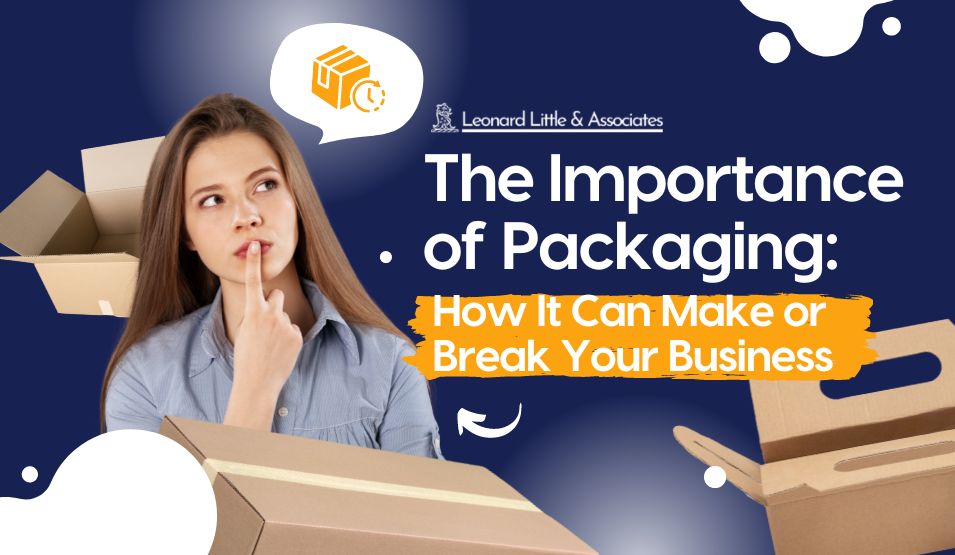As a highly experienced packaging consultant with over 30 years of expertise in the field, both in the UK and Ireland, David Little of Leonard Little Associates is well-equipped to provide invaluable advice on packaging. His qualifications as a Print Technologist and a Packaging Technologist, as well as being a Fellow of IOM3 – Packaging Group, further attest to his knowledge and proficiency in the industry.
Additionally, as the Chair of the Irish Packaging Society, a member of the IOM3 Packaging Group Leadership Team in the UK, and a lecturer in both Ireland and the UK on Packaging Technology, David has had extensive exposure to various sectors and industries. This experience has given him a deep understanding of the importance of packaging for businesses, and how it can be a powerful tool to drive success.
In this blog post, David will share his expertise on packaging technology and its significance for businesses. We will delve into crucial considerations such as understanding the materials used to create packaging, understanding your product and target audience, understanding your sector, distribution and delivery and the full packaging lifecycle. Through his experience and insights, he aims to provide practical tips and valuable advice for making the right decisions when creating packaging that can help you stand out in a crowded market and enhance the customers’ experience with your brand.
Moreover, he will examine the role of sustainability in packaging, including eco-friendly materials and designs that align with your brand values. With his knowledge and experience in this area, he can help you implement sustainable packaging solutions that benefit your business and the environment.
Whether you are a start-up or an established business, his experience and knowledge as a Packaging Consultant can help you create effective and functional packaging that can make a significant impact on your business.
Understanding Different Packaging Materials
Packaging materials come in many different types, each with unique properties, advantages, and disadvantages. Understanding the different materials available is essential to choose the best option for your business and product. From fibre-based materials like cardboard and paperboard to plastics, metals, and glass, each material has specific characteristics that make it suitable for certain applications.
Cardboard
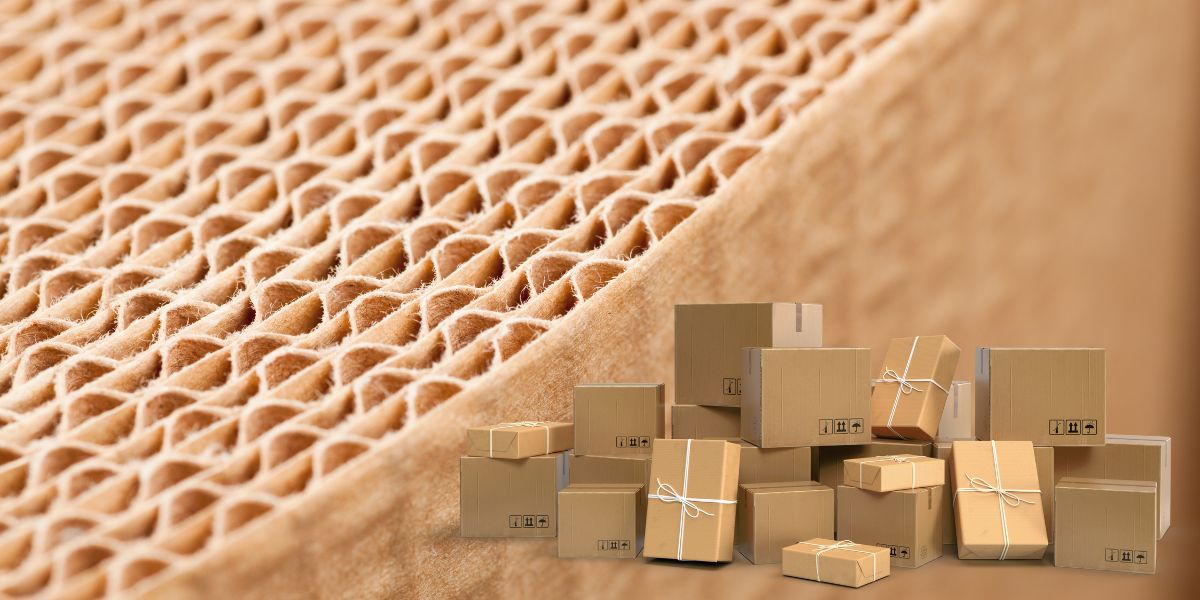
Cardboard is becoming a general term for fibre-based lightweight, durable packaging board that is made from paper pulp. It is a versatile material that can come in different types – corrugated cardboard, paperboard, and recycled cardboard.
Corrugated cardboard, or corrugated fiberboard, is the most common type of cardboard. It is made up of an inner layer(s) of fluting that is sandwiched between two outer layers of liner board. Corrugated cardboard is typically used for some secondary and most transport packing e.g. shipping outer, pallet boxes and some product packaging, etc.
Paperboard, on the other hand, is a thinner-walled solid board, which is a more flexible form of cardboard. It is often used for cereal, cake, biscuit cartons and snack boxes, as well as cosmetic and pharmaceutical packaging.
Recycled cardboard is created from used or discarded paper products. It is often used as an eco-friendly packaging option for businesses that prioritize sustainability.
The best use of cardboard material depends on the intended purpose. Corrugated cardboard is excellent for shipping and product packaging and has high levels of stackability and compression strength and often contains, large amounts of recycled material.
Paperboard is best for smaller items, lightweight products and packaging, and recycled cardboard is the eco-friendly option for those who want to reduce their carbon footprint, but with certain limitations and restrictions in use, as it cannot come in direct contact with food and will often not perform as well as virgin materials, in humid environments, due to its recycled content.
Advantages
- Lightweight
- Durable
- Customisable
Making it an excellent choice for shipping and packaging. It is also widely available and is recyclable and biodegradable, making it an environmentally friendly choice.
Disadvantages
Despite its advantages, cardboard also has some disadvantages. It is not as durable as some other packaging materials, like plastic or metal, which may not be suitable for certain products.
- Not Moisture Resistant which can cause damage to the products inside.
- Occupies a lot of space which increases the cost of transportation in some cases.
- Requires a significant amount of resources like energy, water, and trees.
Plastic
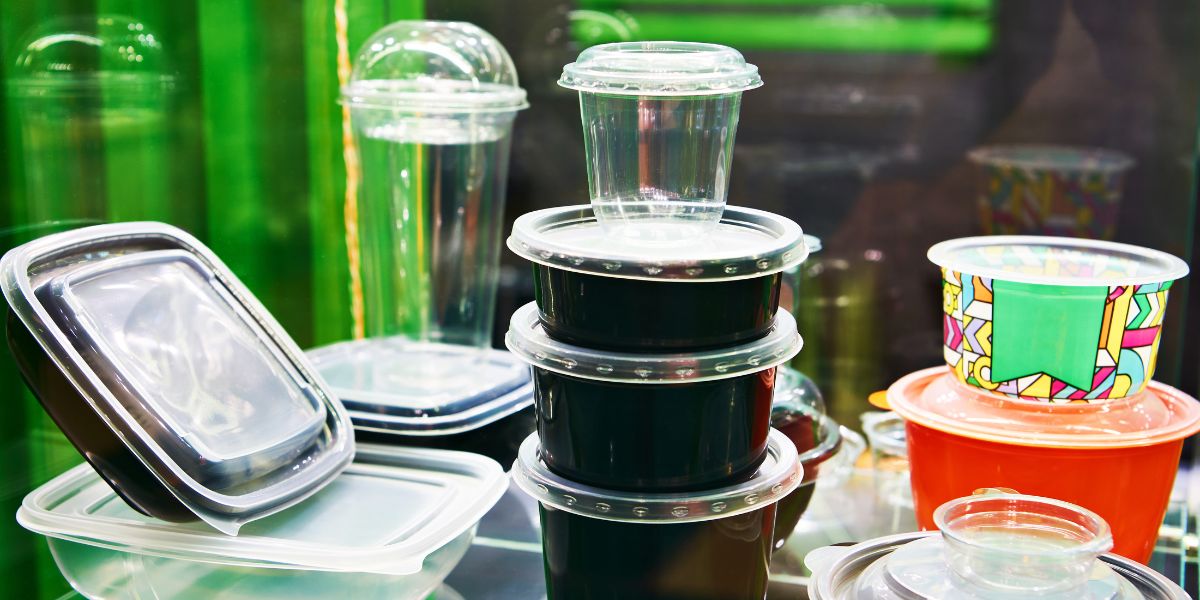
Plastic is a synthetic, mainly petroleum-derived material that is widely used in various industries, including food and beverage, cosmetics, electronics, and medical products. Plastic packaging can come in different forms such as bottles, containers, bags, and wraps, among others. The material is versatile, durable, and lightweight, making it ideal for many packaging applications.
The most common types of plastic packaging materials are polyethylene (PE), polypropylene (PP), polyvinyl chloride (PVC), polystyrene (PS), and polyethylene terephthalate (PET). Each type of plastic has unique properties, and the best use depends on the specific application. For example, PET is often used for soda bottles, PVC is used for medical packaging, and PE is used for creating a sealing or bonding or protective layer, as well as wraps, bags, hoods, etc. in different PE forms.
Advantages
- Low Cost
- Lightweight
- Durability
- Flexibility
- Ability to withstand exposure to different temperatures and chemicals.
- New developments in non-oleo plastics and bioplastics
Plastic is also versatile and can be customized with printing or other branding options to attract customers and provide barrier properties in different combinations.
Disadvantages
Despite its merits, plastic packaging also has several disadvantages, especially its impact on the environment.
- Environmental harm: One of the major concerns of plastic is its negative impact on the environment. It is virtually non-degradable, can stay in the environment for hundreds of years, and causes harm to wildlife and ecosystems.
- Increased waste: Due to the low biodegradability of plastic, they accumulate as waste, leading to overflowing landfills, ocean plastic pollution, and other environmental hazards.
- Health risks: Plastic can emit harmful chemicals that pose significant health risks when they come in contact with food or medicines, especially when exposed to high temperatures.
- Depletion of resources: Plastic comes from non-renewable sources, mainly petroleum, and contributes to environmental issues such as climate change and air pollution.
- Recycling challenges: Unlike other standard eco-friendly packaging, recycling plastic is not cost-effective, and the process is complex, requiring specialized equipment to convert them to reusable products.
- Litter: Plastic packaging, especially single-use plastic, tends to become litter and is often found in the environment owing to poor disposal attitudes.
Glass
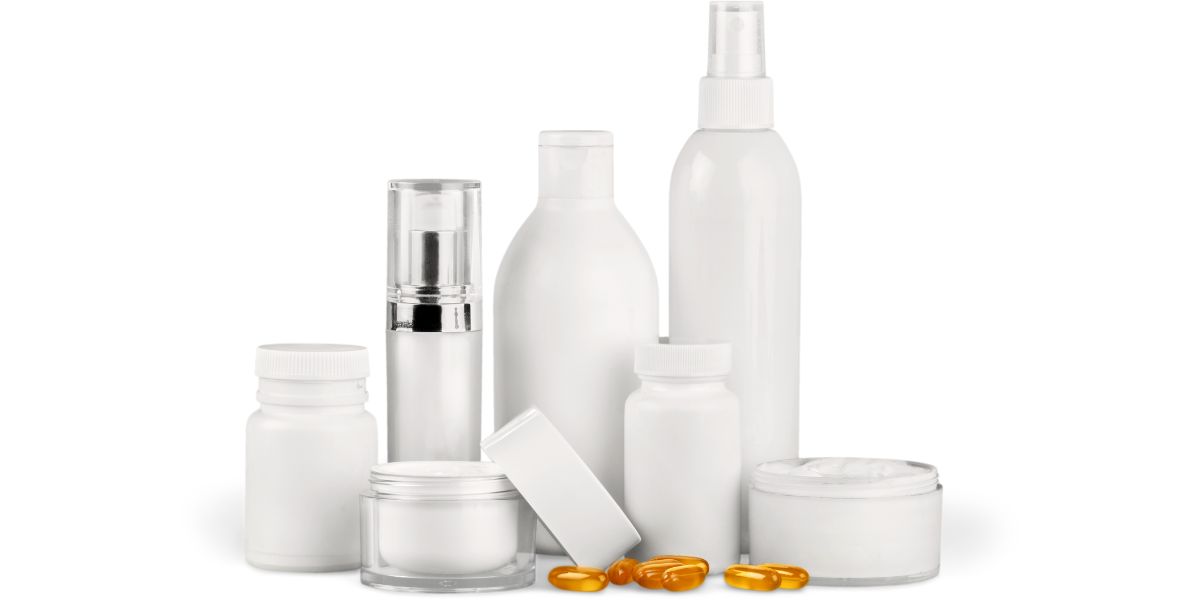
Glass is best used in the food and beverage, pharmaceutical, and cosmetic industries. Food and beverages require airtight packaging to prevent contamination and maintain the taste and a good gas and moisture barrier, while cosmetics need special protection from UV light that finer glass can provide. Pharmaceuticals also require protection from the air and unfiltered UV light that glass provides.
Glass packaging is also useful for decorative purposes, such as candles or art pieces, due to its transparency and reflective properties. Moreover, glass packaging is great for products where consumers may want to see what they are buying before making a purchase decision.
Advantages
- Impermeable nature: Glass is impermeable to gases and water vapour, thus making it ideal for storing and preserving food, beverages, and other products that require an airtight seal.
- No interaction with the product: Glass will not interact chemically with the product, preventing product contamination or changing the taste or aroma of its contents.
- Eco-friendly: Glass is an infinitely recyclable material, which means that it can be recycled repeatedly with no loss in performance. Moreover, recycled glass can be used in the production of new glass packaging, making it environmentally friendly.
- Transparency: Glass packaging’s transparency allows consumers to see the product, which builds trust in the product, making it easier to market.
- Can withstand high temperatures: Glass is heat-resistant, making it the best option for storing hot drinks, such as coffee and tea.
- Higher perceived value: Glass provides a higher perceived value of the products packed, giving a premium feel to consumers.
- Keep products fresh: Glass protects products from light and preserves their flavour and aroma, increasing the products’ shelf life.
Disadvantages
- Fragility: Glass is more fragile compared to other types of materials, making it less suitable for products that will be handled frequently or shipped over long distances.
- Limited designs and shapes: Producing intricate designs in glass can be challenging and expensive due to manufacturing constraints. Moreover, the size and shape of a glass container may limit what type of product can fit into it.
- Heavyweight: Glass is heavier than other packaging options, which raises transportation costs and makes it difficult to distribute products over large distances.
- Higher cost: The production cost associated with creating glass packaging is generally higher than those associated with plastic or paper due to its heavier weight, more complex moulds needed, and additional protective measures, such as shrink wrapping or reinforcing boxes needed when shipping it.
- Unsuitable for microwave use: Glass packaging is not suitable for microwave use as microwaves heat unevenly and can cause stress on the glass containers resulting in breakage.
Aluminum
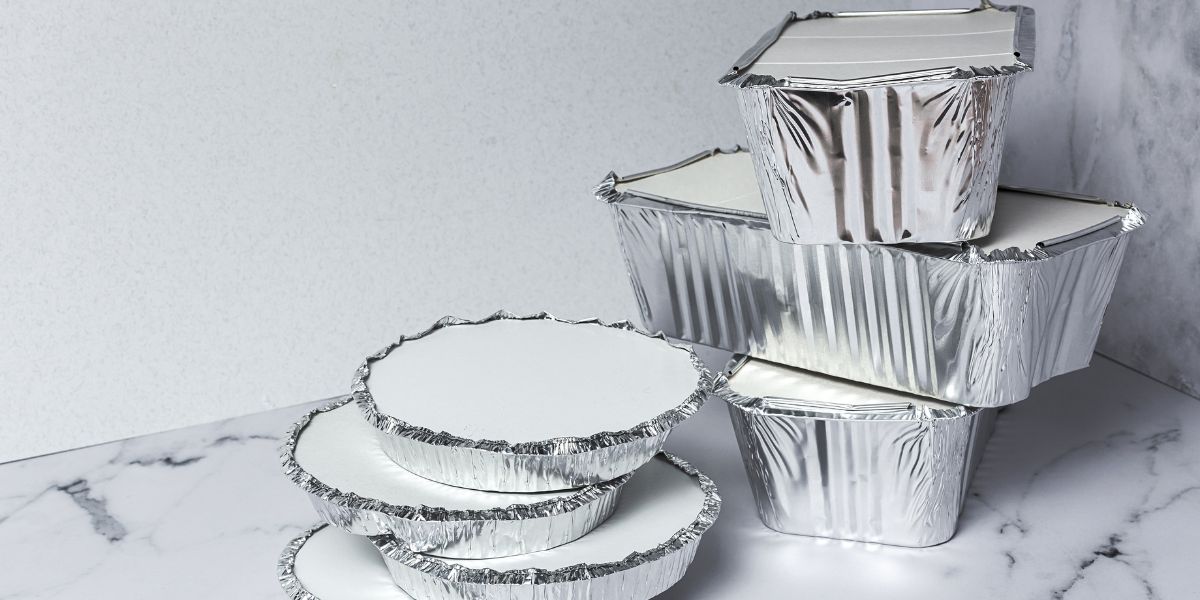
Aluminium material refers to thin sheets or foils made of aluminium metal that are used to package a wide range of products. It has become increasingly popular for packaging due to its numerous advantages over other materials like plastic, paper, or glass.
Aluminium packaging material is used in numerous industries, including food and beverage, pharmaceutical, cosmetic, and consumer goods. In the food and beverage industry, it is commonly used to package soda drinks and beer in cans, and some meats products prepared meals or fast foods in aluminium trays which helps to maintain the freshness or good barrier properties. Pharmaceutical and cosmetic industries use aluminium to package various products like ointments, creams, tablets, lotions, and aerosols that require a good barrier or sterile and consistent packaging.
Additionally, aluminium finds extensive use in industrial or commercial packaging, with most industrial or commercial consumers preferring it since it is less expensive and less bulky. For instance, it is used for packaging automotive parts, gadgets, and material handling equipment, among others.
Advantages
- Lightweight – Aluminum is a lightweight metal, making it an ideal packaging material for products that require minimal weight like beverages.
- Non-toxic – Aluminum is inert and non-toxic, making it an excellent choice for packaging food and pharmaceuticals.
- Gas barrier – Aluminum can prevent the passage of gas, vapour, or moisture, preserving the quality and freshness of products.
- High tensile strength – Aluminum is strong but elastic, with high tensile strength, making it suitable for manufacturing a variety of packaging products.
- Recyclability – Aluminum is infinitely recyclable, and the recycling process requires relatively less energy compared to other packaging materials.
Disadvantages
- Production process – The production of aluminium requires a considerable amount of energy, contributing to greenhouse gas emissions and other environmental concerns.
- Cost – Compared to other packaging materials like plastic and paper, aluminium is relatively expensive and can add to a product’s overall costs.
- Sharp edges – Aluminum cans or sheets can have sharp edges that can be cut during handling or use.
- Corrosion – Aluminum is prone to corrosion when exposed to humid, acidic, or alkaline environments.
- Malleability – Aluminum foil or sheets are malleable and can be bent, crushed, or deformed easily, leading to product damage during transportation.
- Recycling limitations – While aluminium is infinitely recyclable, the recycling process can also lead to the production of hazardous waste and the release of greenhouse gases.
Wood
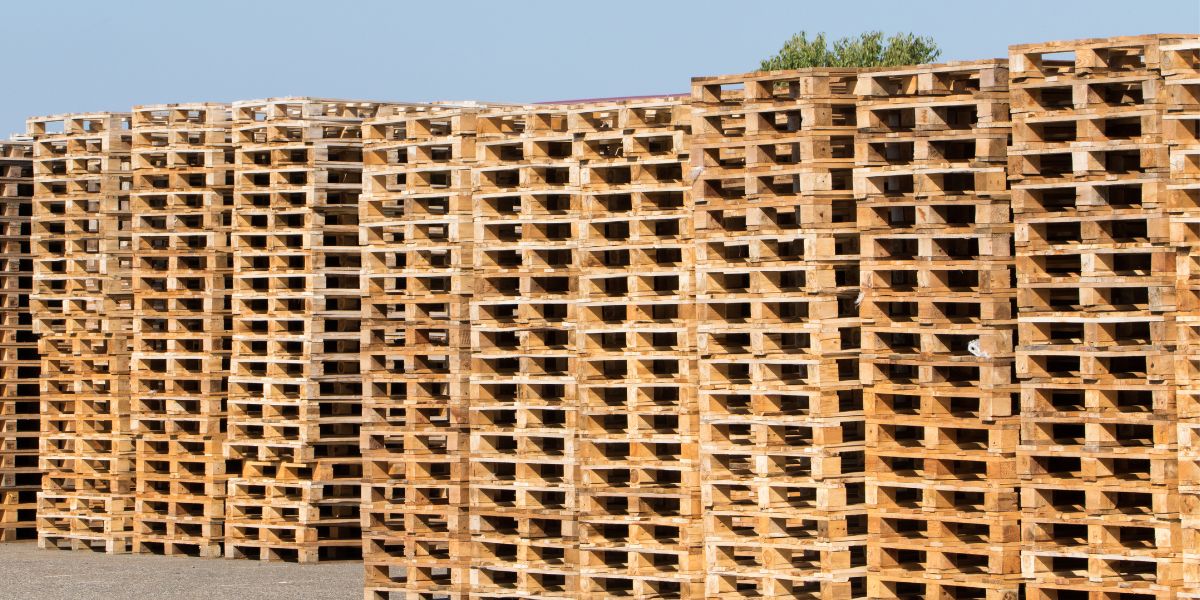
Wood material refers to any wood material that is used for packaging, including pallets, crates, and boxes. It is used to transport goods and products safely during shipping and storage, particularly for heavy or fragile items. Wood packaging material is generally made of timber or wood composites like plywood, particle board, or oriented strand board.
One of the best uses of wood packaging material is for the transportation of heavy or fragile items as it provides excellent stability and support during shipping. Additionally, it is an affordable and sustainable material.
Advantages:
- Strength and Durability – Wood packaging material is known for its strength and durability, making it a reliable choice for shipping and storage of heavy and fragile items.
- Excellent Support – It provides excellent support, which is important during transport to prevent damage to the product being shipped.
- Cost-effective – Compared to some materials, at the required weight and strength, wood packaging is more affordable.
- Sustainable – Unlike some other materials, wood is a renewable resource and can be recycled and reused, making it an eco-friendly option.
- Easy to Customize – Wood packaging can be easily customized to fit the specific needs and dimensions of the product being shipped.
Disadvantages:
- Bulkiness and weight – It can be heavy and bulky, making it difficult to handle and transport.
- Susceptibility to damage – Wood is subject to moisture and insect damage, which can compromise its strength and durability over time.
- Upkeep and maintenance – Regular upkeep and maintenance are required to keep wood packaging in good condition, which can add to the cost of using this type of packaging.
- Disposal – Wood packaging can be difficult to dispose of, as it is a bulky material that may require specialized equipment or facilities for proper disposal.
Paper
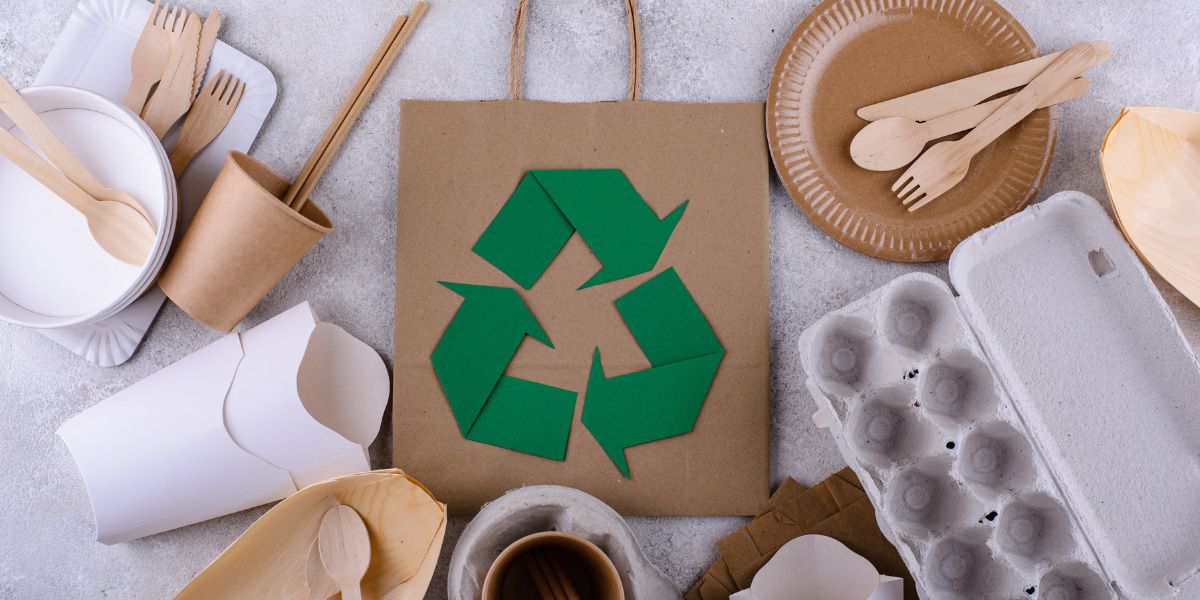
Paper is a versatile and widely used material for protecting and transporting goods. Made from wood fibres, paper packaging is lightweight, durable, and sustainable, making it an ideal choice for a variety of industries.
Properties of paper packaging make it an attractive option. It is naturally biodegradable, recyclable, and renewable. Paper is also cost-effective when compared to many other packaging materials. Paper provides excellent cushioning and protection for the products inside, and it is easy to print on, allowing for customization and branding.
Paper packaging is used in a wide range of industries, including food and beverage, pharmaceuticals, cosmetics, and consumer goods. In the food industry, paper packaging is used for products such as cereals, snacks, and bakery items.
In the pharmaceutical industry, paper packaging is used for medicines, tablets, and capsules. In the cosmetics industry, paper packaging is used for soap, shampoo, and other personal care products. For consumer goods, paper packaging is used for items such as clothing, toys, and electronics.
Within the packaging industry, there are different types of paper packaging, each with its unique properties and applications.
- Kraft paper: Kraft paper is durable and resistant to tearing and is often used for wrapping products or heavy-duty bags.
- Corrugated paper: Corrugated paper is made up of two or more layers of paper, stiffened by a corrugated inner layer. This packaging material provides excellent cushioning and protection, making it a popular choice for shipping and transport.
- SBS board: SBS stands for solid bleached sulfate, which is a high-quality, white paperboard. SBS board is often used for packaging items like pharmaceutical cartons, frozen food boxes, and cosmetics.
- Folding box board: FBB is a food-grade board used for most cartons. The flat sheets, pre-cut, and scored paperboard that is folded into a box shape. It is a common choice for consumer goods, such as food toys, electronics, and household appliances.
Advantages
There are many advantages to using paper as a packaging material. Some of the key advantages include:
- Sustainable: Paper is a renewable, biodegradable, and recyclable material that can be used again and again, making it a sustainable choice for packaging. This means that paper has minimal impact on the environment and can help reduce waste and pollution.
- Cost-effective: Paper is relatively inexpensive compared to other packaging materials like plastic or metal. This means that using paper can help businesses save on packaging costs and improve their overall profitability.
- Versatile: Can be customized in a variety of ways to suit the needs of different products and industries. It can be printed, folded and cut, allowing businesses to create unique packaging designs that stand out on store shelves. However the less embellishment, the better from a recycling point of view.
- Lightweight: Paper is a lightweight material, which makes it easy to transport and can help reduce shipping costs for businesses. It also means that it has a low carbon footprint compared to heavier materials like metal or glass.
- Protects products: Paper is good at protecting products from scratches and other forms of damage during transport and storage. Additionally, special paper packaging types like corrugated paper can provide excellent cushioning and shock absorption.
- Branding opportunities: Paper packaging provides businesses with the chance to create unique branding designs and logos that can help them stand out from competitors. This can help improve brand visibility and recognition among consumers.
Disadvantages
While paper packaging offers many advantages, there are also some disadvantages to consider. Here are a few of the potential drawbacks to using paper as a packaging material:
- Limited moisture resistance: Paper is highly susceptible to moisture, which can compromise the integrity of the packaging and damage the products inside. This makes it less suitable for packaging products that require a high level of protection from moisture or humidity.
- Fragility: Although paper is lightweight and cost-effective, it is also relatively fragile, especially when compared to other materials like plastic or metal. This means that it might not be the best option for packaging or transporting heavy products that require a higher level of protection.
- Limited strength: While some types of paper like corrugated paper provide excellent cushioning capabilities, not all types of paper can withstand a lot of pressure. This makes it less suitable for shipping fragile or bulky items.
- Vulnerable to pests: It is prone to damage by pests like termites and rodents, which can lead to damage or contamination of the products inside the packaging.
- Limited print quality: While the paper is easy to print on, not all types of paper provide the same quality of print, which can limit the ability of businesses to create high-quality and eye-catching branding designs.
Understanding Your Product and Target Audience
Now that we have explored the main packaging materials and their respective uses, it’s time to dive into the crucial aspect of understanding your product and your target audience.
As a seasoned packaging consultant, I can say that understanding your product and target audience is essential even from a functional or technological point of view when it comes to choosing the right packaging material for your business and product.
The packaging you choose should obviously protect your product, communicate your brand message effectively, and be attractive to your target audience but should also be functional in regards to preservation, containing, filling, and storage, during the supply chain and in use.
It’s important to consider factors such as size, weight, shape, fragility and the context of use and storage of the product when selecting the appropriate packaging material.
So before you embark on the packaging design of your product it is super important to understand the playing field of what materials you can work with beforehand.
Getting the proper advice from a packaging technologist will save you time and money by clearly establishing what materials are going to work for the type of product you are packaging and its requirements to see the product through its packaging life cycle.
Given all these considerations, having an experienced packaging consultant on board can be invaluable when it comes to making the right choice for your business.
With our expertise and knowledge of industry trends, standards and end-of-life considerations, we can ensure that the selected materials meet all requirements in terms of safety, functionality, sustainability and cost-effectiveness.
Understanding Your Products Supply Chain
It’s crucial to understand the product requirements, you’re packaging to make the right choice for the material used. The choice of material can affect your business in many ways, including its performance, cost, and environmental impact.
Choosing the wrong material can lead to potential risks for your business. For example, in the pharmaceutical industry, using the wrong packaging material can lead to contamination, tampering, and spoilage of the product. In the food industry, using the wrong material can lead to shorter shelf life, bacterial growth, and loss of freshness.
These risks can result in significant financial losses and damage to the brand’s reputation and even food safety. In the electronics industry, for instance, materials like foam and bubble wrap are often used to cushion products that are vulnerable to physical damage.
In the cosmetics and personal care sector, glass is preferred over plastic due to its aesthetic appeal, improved product visibility and of course functionality.
Different industries have specific requirements for their packaging materials based on the nature of the product and the intended use.
For example, in the pharmaceutical industry, glass is commonly used for packaging because of its impermeability, transparency, and ability to maintain the integrity of the product. it is also inert and does not react with the contents. It is also easy to sterilise, non-porous, and resistant to corrosion.
In the food industry, plastics and aluminium are commonly used for packaging because of their lightweight, durability, and ability to preserve the freshness of the product.
Understanding the reasons behind the use of each material is essential to make the right choice for your product.
Distribution and Delivery Considerations
As a Packaging Consultant with years of experience in the industry, it is important to understand the full lifecycle of the packaging of a product from manufacturing to packing to the supermarket shelf and ultimately to ideally, end-of-life reuse or recycling.
Storage, distribution, shipping and delivery are crucial aspects that should be considered in the packaging process, as they can directly impact the integrity and quality of the packaging.
Primary, secondary and tertiary packaging layers will all have important considerations when choosing your packaging materials. Can it hold weight, can it be stacked without folding under pressure? is the packaging able to withstand extra weight etc? These are all legitimate questions that need to be explored and understood before even considering the design of your primary packaging.
To ensure that the delivery and distribution process runs smoothly, packages designed for transportation should include features that protect the contents from damage, moisture, vibration and temperature changes. These features can include specific shapes, sizes, and materials that serve as a barrier to external elements that may impact the product.
Materials such as corrugated cardboard, and void-filling packaging can offer excellent protection against damage during handling and transportation, ensuring that the product arrives intact, but there too need to be tested.
Adopting best practices for logistics can also play an essential role in ensuring safe and efficient delivery. For instance, using tracking and tracing technology can allow for better monitoring of the delivery process and help in identifying any issues that arise.
Proper scheduling, handling, and transportation practices also need to be implemented to avoid delays or damage to the package but from a functional point of view, your product packaging must be addressed technologically with a full understanding of its complete lifecycle.
In summary, packaging plays a crucial role in the safe and efficient delivery of products. Choosing the right materials, incorporating effective features, and adopting best practices for logistics will help to ensure secure and efficient transportation. By doing so, customers can be satisfied by the quality of the product, thus enhancing their loyalty to the brand.
Maximize your packaging potential with the help of David Little, a leading Packaging Consultant at Leonard Little & Associates

As a Packaging Consultant with 3 decades of experience, I have had the privilege of working with a diverse range of clients across various sectors both in the UK and Ireland.
At Leonard Little & Associates, we have provided our expertise to clients in the Manufacturing, Food & Drink, Industrial, and Pharmaceutical sectors, among others.
Our extensive knowledge of packaging technology allows us to problem-solve or provide tailored solutions to meet the unique needs of each client and sector.
So, if you’re looking for a Packaging Consultant that can offer invaluable insights and expertise and help bring new products to market faster or sort quality issues, etc., I am here to help!
Make sure to contact me through email: david@leonardlittleassociates.com or call +353 87 9086 123.
Looking forward to talking to you soon!

